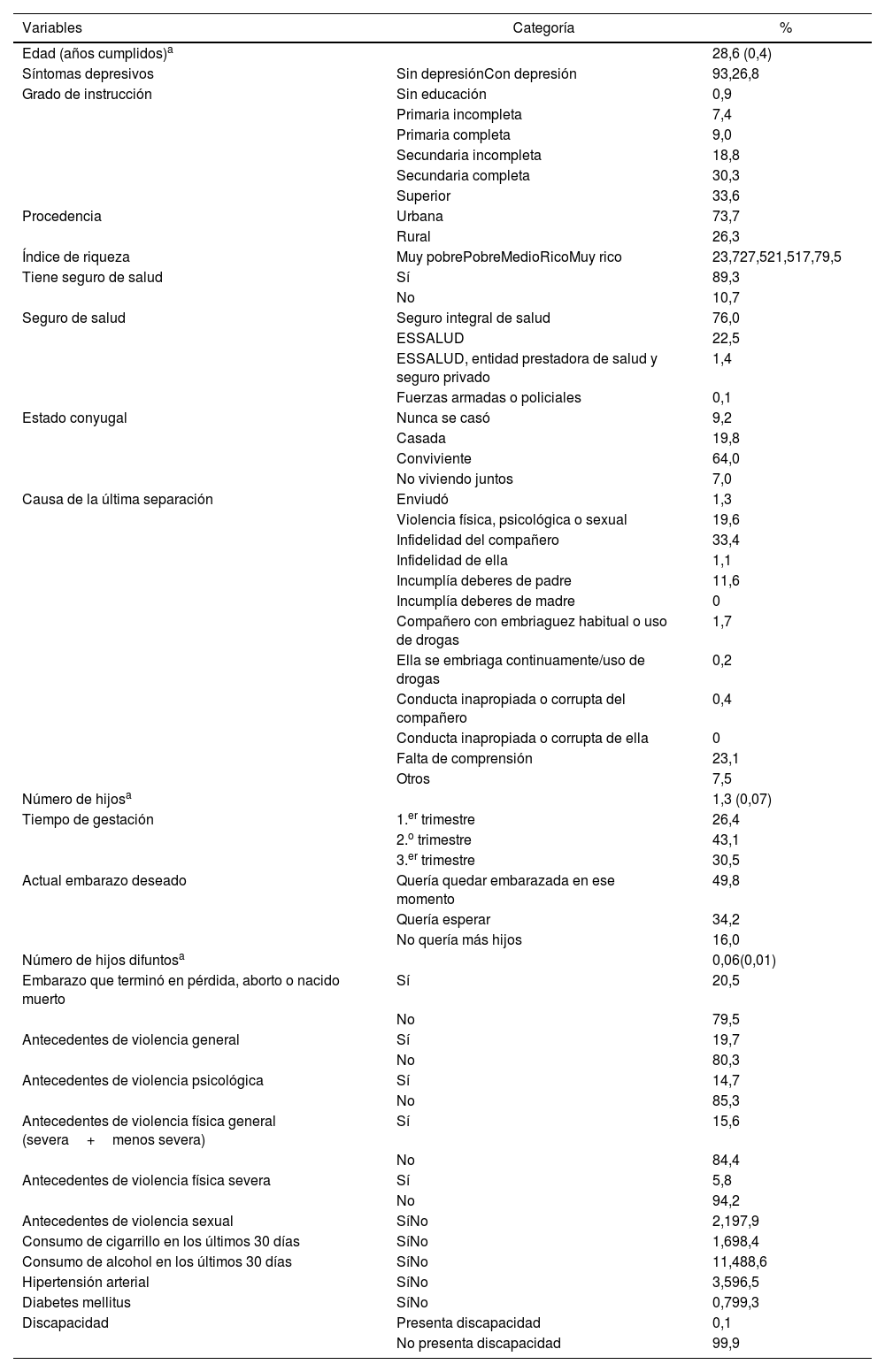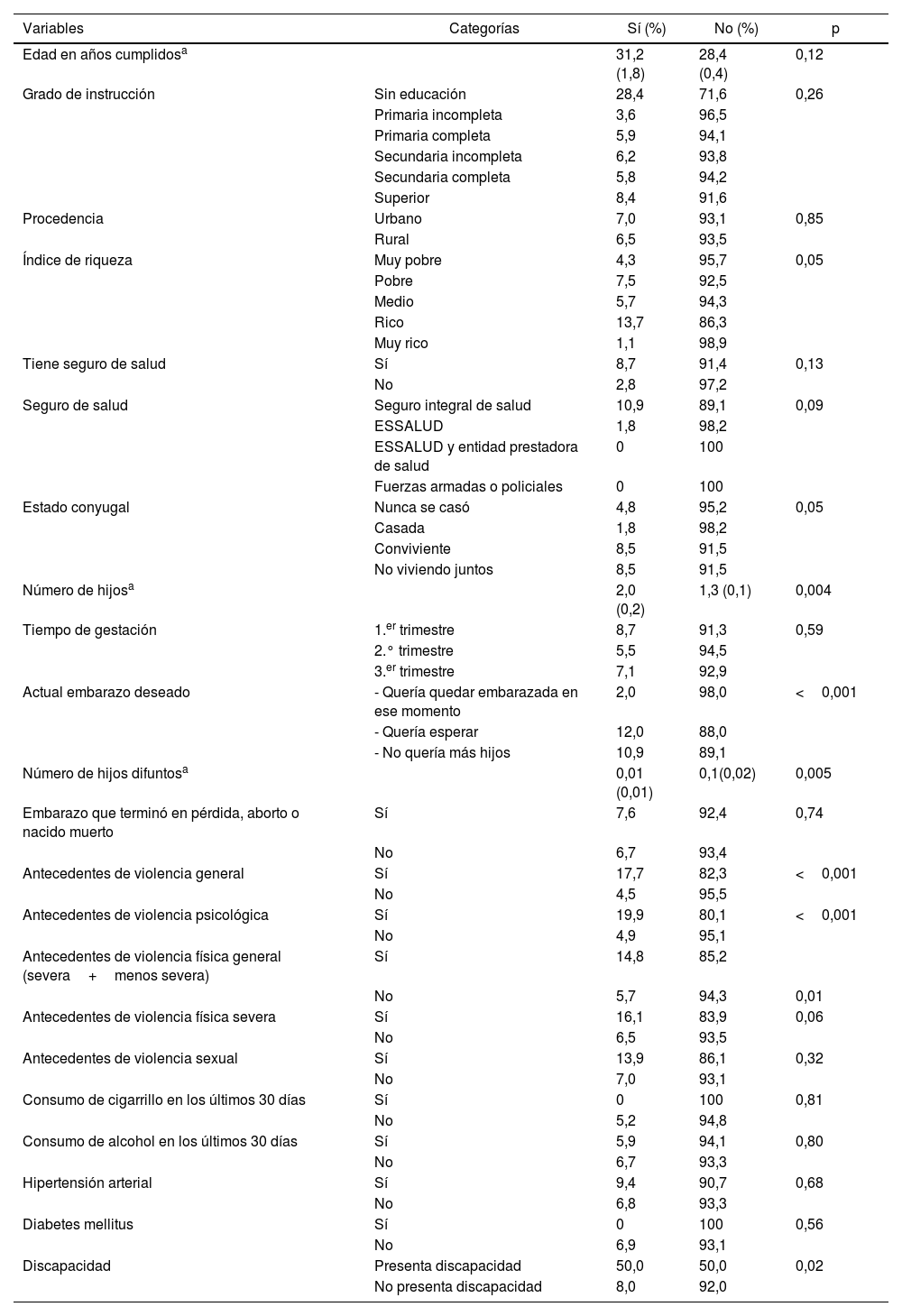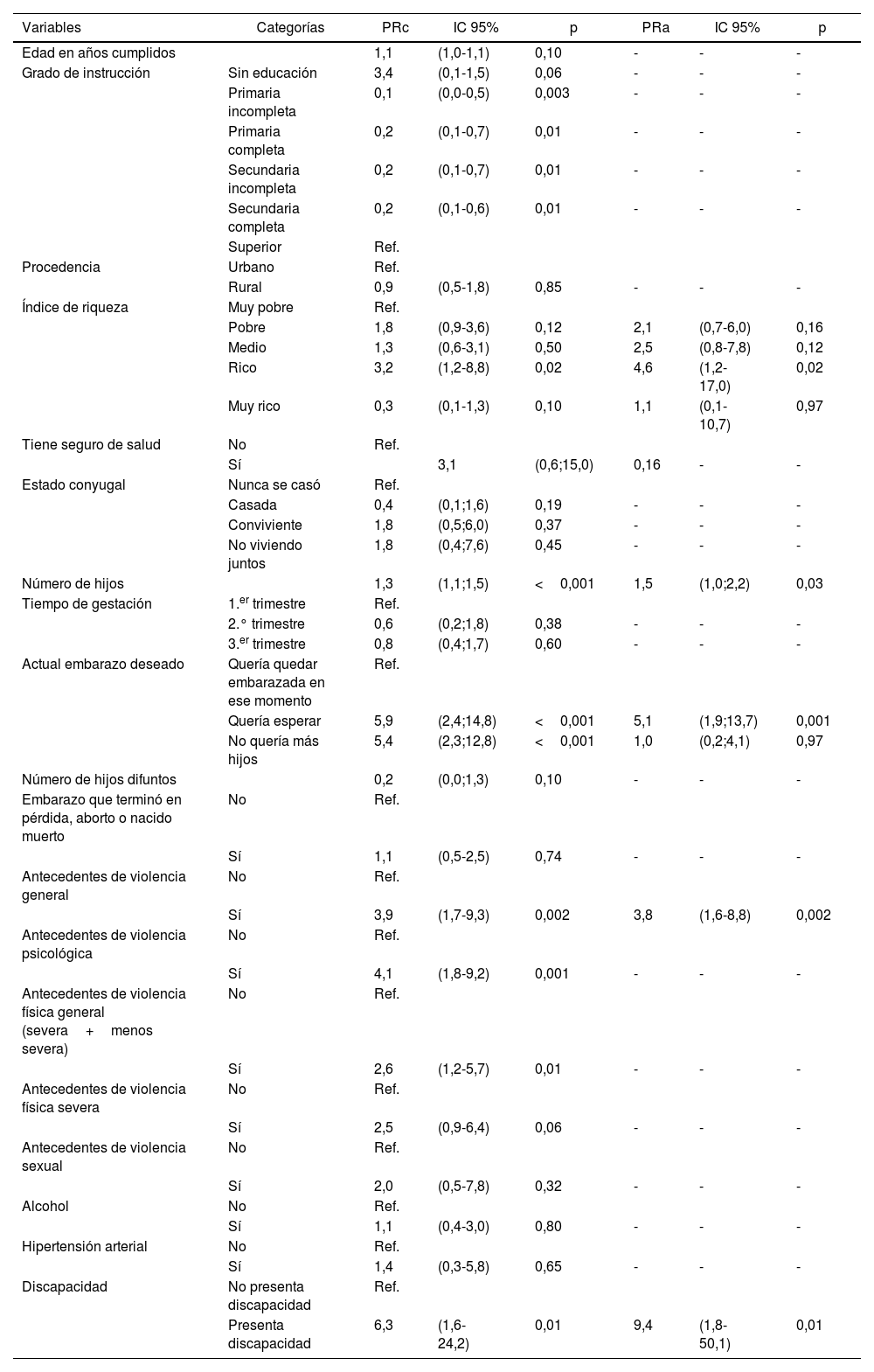Determinar los factores asociados a la presencia de síntomas depresivos en la población gestante peruana utilizando la Encuesta Demográfica y de Salud Familiar ENDES 2018-2019.
Material y métodosSe realizó un análisis de base secundaria de la ENDES 2018 y 2019. Para evaluar los síntomas depresivos se utilizó el instrumento PHQ-9. Para medir los antecedentes de violencia se utilizaron preguntas estandarizadas. En el modelo de múltiples variables se utilizó la regresión de Poisson, se calculó el PR crudo y ajustado con IC 95% y las variables se incorporaron al modelo según criterio estadístico.
ResultadosLa prevalencia de síntomas depresivos en gestantes fue del 6,8%. Hubo un 19,7% de gestantes que expresó haber tenido antecedentes de violencia general. Se encontró asociación con dicho antecedente (PRa 3,8; IC 95%=1,6-8,8; p=0,002), la presencia de algún tipo de discapacidad (PRa=9,4; IC 95%=1,8-50;1 p=0,01) y el número de hijos (PRa=1,5; IC 95%=1,0-2,2; p=0,03). Las encuestadas que querían esperar más tiempo para salir embarazadas tuvieron 5,1 veces la prevalencia de síntomas depresivos en comparación con aquellas que querían quedar embarazadas en ese momento (p<0,001). No hubo asociación significativa entre el resto de variables y el outcome.
ConclusiónEl presente estudio evidenció que los antecedentes de violencia general, la presencia de algún tipo de discapacidad, el número de hijos y el tiempo de espera para salir embarazadas se asocian a síntomas depresivos en gestantes. Se requieren más estudios, especialmente de tipo longitudinal.
To determine the factors associated with the presence of depressive symptoms in the Peruvian pregnant population using the Demographic and Family Health Survey ENDES 2018–2019.
Material and methodsA secondary base analysis of the ENDES 2018 and 2019 was carried out. The PHQ-9 instrument was used to evaluate depressive symptoms. Standardized questions were used to measure the history of violence. In the multi-variable model, Poisson regression was used, the crude PR was calculated and adjusted with 95% CI, the variables entered the model according to statistical criteria.
ResultsThe prevalence of depressive symptoms in pregnant women was 6.8%. There was 19.7% of pregnant women who expressed having had a history of general violence. An association was found with said antecedent (PRa 3.8, 95% CI=1.6; 8.8, p=0.002), the presence of some type of disability (PRa=9.4, 95% CI=1.8; 50.1, p=0.01) and the number of children (PRa=1.5, 95% CI=1.0; 2.2, p=0.03). Respondents who wanted to wait longer to get pregnant were 5.1 times the prevalence of depressive symptoms compared to those who wanted to get pregnant at that time (p<0.001). There was no significant association between the rest of the variables and the outcome.
ConclusionThe present study showed that a history of general violence, the presence of some type of disability, the number of children and the waiting time to get pregnant are associated with depressive symptoms in pregnant women. More studies are required, especially of a longitudinal type.









